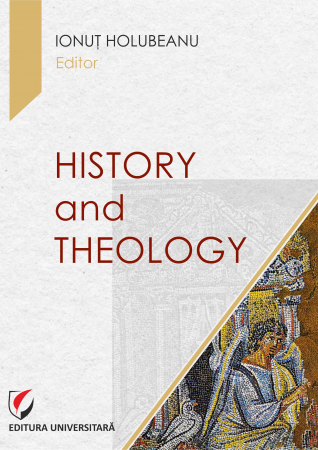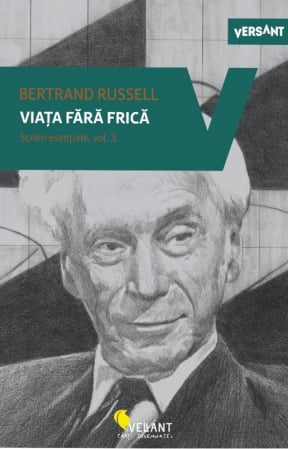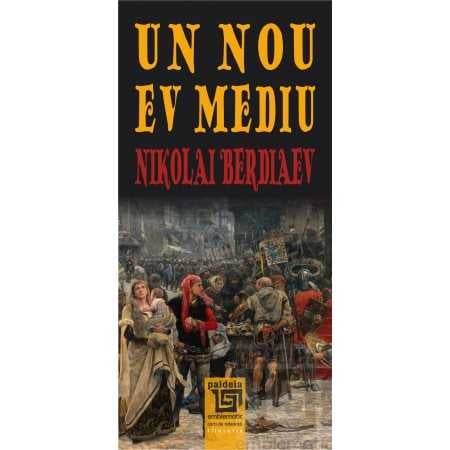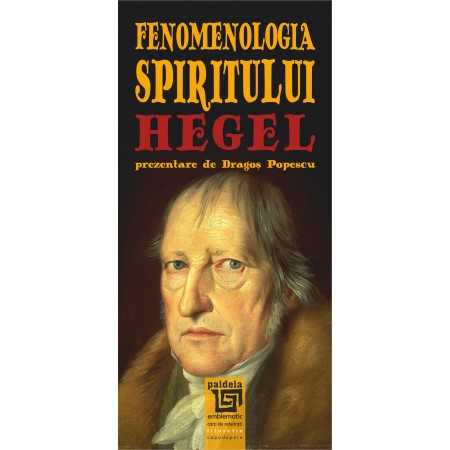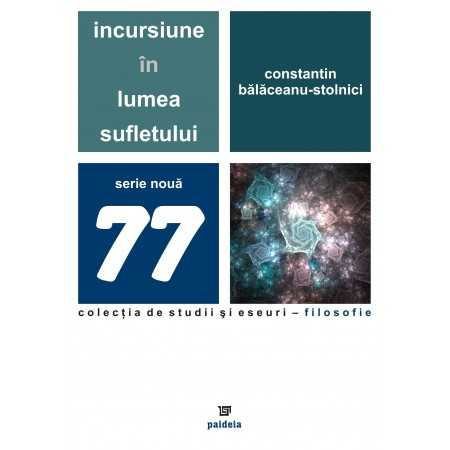Manuscript proposals: [email protected] / 0745 204 115 //// Tracking orders Individuals / Sales: 0745 200 357 / Orders Legal entities: 0721 722 783
ISBN: 978-606-28-1019-1
DOI: 10.5682/9786062810191
Publisher year: 2019
Edition: I
Pages: 392
Publisher: Editura Universitară
Author: Bertalan Pusztai
Product Code:
9786062810191
Do you need help?
0745 200 357
- Description
- Download (1)
- Authors
- Content
- More details
- Reviews (0)
Present volume deals with aspects of the social history of Hungarian Greek Catholicism. This group came into existence as a result of the Church union agreements of the 16th and 17th centuries. These agreements encouraged cohesion, creating a new relogious community composed of Roman Catholic Hungarians and Romanians and Rusyns who formerly adhered to the Orthodox faith. As a result, tens of thousands of Greek Catholics of the north-eastern territories of the Hungarian Kingdom went through a process of Magyarization in the course of the 18th and 19th centuries. The emergence of nationalism in the late 19th century saw the creation of new Hungarian Greek Cathloci cultural identity shaped by the lay intelligentsia of this assimilated group, This book presents an overview of the identity-shaping discursive processess and strategies of Hungarian Greek Catholics triggered by their assimilation.
Product compliance information
-
Collision of Identities. Assimilation and Myth-making among Hungary’s Greek Catholics
Download
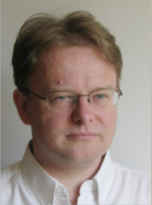
BERTALAN PUSZTAI (PhD, Dr. habil) is Associate Professor at the University of Szeged, Hyngary. His field of interest, besides theoretical and methodological questions of contemporary ethnological and antropological research, is the relationship between religion and national identity, critical tourism studies and intercultural communication.
Preface / 7
1. The Hungarian Greek Catholics: identity and Historical Consciousness / 15
2. Assimilation on the Hungarian Greek Catholic Periphery / 35
3. Discursive tactics and identity search at the fin de siècle / 55
4. Discoursing Boundaries: identity Creation in the interwar Period / 79
5. A religious diaspora Community in the interwar Years / 107
6. The fate of Hungarian Greek Catholics in 20th century Szeklerland, Romania / 137
7. institutional Changes in the Greek Catholic Church in Hungary, 1950–2000 / 147
8. Paths to identification in a double Minority / 159
Referencess / 191
Appendix: Memorial Book of the roman Pilgrimage of the Greek Catholic Hungarians / 215
1. The Hungarian Greek Catholics: identity and Historical Consciousness / 15
2. Assimilation on the Hungarian Greek Catholic Periphery / 35
3. Discursive tactics and identity search at the fin de siècle / 55
4. Discoursing Boundaries: identity Creation in the interwar Period / 79
5. A religious diaspora Community in the interwar Years / 107
6. The fate of Hungarian Greek Catholics in 20th century Szeklerland, Romania / 137
7. institutional Changes in the Greek Catholic Church in Hungary, 1950–2000 / 147
8. Paths to identification in a double Minority / 159
Referencess / 191
Appendix: Memorial Book of the roman Pilgrimage of the Greek Catholic Hungarians / 215
Greek Catholicism is a typical phenomenon of Mitteleuropa. Aside from the northeast of Hungary, the majority of Greek Catholics live in the east of Slovakia, in the transcarpathian province and southwest of Ukraine, in the transylvanian parts of Romania and in the southeast of Poland. For centu ries, from the Greek Catholic union agreements of the sixteenth and seven- teenth centuries to this day, Greek Catholicism could be considered a precise marker of the two great european religious and cultural regions and a manifestation of the borderline between eastern and Western european, ortho dox and Western, latin and Protestant Christianity.
The present volume deals with aspects of the social history of Hungarian Greek Catholicism. This group came into existence as a result of the above mentioned union agreements of the sixteenth and seventeenth centuries. These agreements encouraged cohesion and created a new religious commu nity between roman Catholic Hungarians and other nationality groups who formerly adhered to the orthodox faith. As a result, tens of thousands of rusyn and romanian Greek Catholics of the north-eastern territories of the Hungarian Kingdom went through a process of Magyarization in the course of the eighteenth and nineteenth centuries. In the late nineteenth century, the emergence of nationalism saw the creation of a new Hungarian Greek Catholic cultural identity by the lay intelligentsia of this assimilated group. Enthusiastic to build a separate discourse, they confirmed both their identi fication with mainstream Hungarian society and their separation from other nationalities, and tried to create a sense of belonging and a unified historical consciousness. This book seeks to give an overview of the identity-shaping discursive processes and strategies of Hungarian Greek Catholics triggered by their assimilation.
Hungarian Greek Catholics are a minority in several ways. First, they practice a minority religious ritual in Hungary. Although jurisdictionally they are part of the Catholic Church, their eastern rite is markedly different from the latin ceremony and resembles that of orthodoxy. Nevertheless, they are in unity with the roman Catholic Church, not with the orthodox Church; indeed, they are considered heretics—even traitors — by orthodoxy. Ssecond, their rusyn and romanian ethnic origins and Hungarian identity have accorded them, in the eyes of the surrounding nationalities, an ethnically intermediary position or what we might term multiple belonging, which in turn has made them the object of suspicion. This climate of suspi cion was completely forgotten in Hungary during the socialist decades and has not reappeared. Such attitudes toward the Hungarian Greek Catholic community may, however, still be encountered in subcarpathia and in Tran sylvania. Hungarian Greek Catholics are a typical in-between phenomenon. The complexity of their identity is nicely illustrated by the bumper-sticker pictured on the cover of this volume. Hungarian Greek Catholics created and began using this symbol to identify themselves in the 2010s. The majority population in Hungary may be surprised to know that the sign is one of the oldest and most widely used Christograms in eastern Christianity. As such, displayed next to the Hungarian number plate and the flag of the European Union it sheds light on the complex identificatory history of this group.
The years of the formation and establishment of the Hungarian Greek Catholic identity between 1850 and 1950 were a highly intensive period of identity construction which offers a unique opportunity of studying the processes of identity-creation. The Central europe of the last hundred years has produced conditions in which communities of ethnic minorities almost as a rule attempt to define themselves vis-à-vis the majority. This book presents a context where in a minority community has to define itself facing sever al relevant “majorities”. It hopes to demonstrate how decisive the image of the majority a minority creates for its own members is and to what extent its self-definition adapts to this concept. As all concepts, this, too, is a product of consciousness and does not necessarily reflect the actual situation. Those who design the self-representations of a minority community try, as it were, to gather the concepts the majority or majorities have constructed of them. Their aim is to adapt their self-representations through the developing mass media of the time to the images the majorities have constructed of them. such self-representations are characterized by fears from the stereotypes of the majority, hopes to be accepted by the majority and overcompensations to prove the loyalty to the Hungarian nation. Moreover, Greek Catholics made strenuous efforts in offering to act as intermediaries in the Magyarization of national minorities. These offers were never seriously considered by the ma jority.
A number of contexts and personal experiences have inspired the creation of this book. Being born and raised in the north-eastern region of Hungary gave me a thorough everyday knowledge about the community under examination. Studying at the university of Debrecen, where my university professor, Elek Bartha, dedicated his scholarly activity to the Greek Catholics spurred my interest in them as a research topic. The fall of the Soviet Union made it possible for me to start ethnographic fieldwork among the Hungarian Greek Catholics of subcarpathian Ukraine soon after the political changes. I am deeply indebted to my informants, friends, first of all László Molnár and his family in western subcarpathia, who helped me in the field during those turbulent years. Also i owe a debt of gratitude to the editors of scholarly media, among them Acta ethnographica Hungarica, where my first studies on this matter were published. While still engaged in my university studies, I began field research in eastern Transylvania, in Romania, among Hungarian Greek Catholics with my friend, the prominent geographer and anthropologist, the late Zoltán Illyés. Róbert Keményfi, also from the University of Debrecen, dedicated inspirational studies to the analyses of the spatial processes of the Greek Catholics. My early field projects resulted in a focus on the identification processes of the Hungarian Greek Catholics, which i continued to study at the University of Szeged as an assistant professor. The study of an extraordinarily intensive century of identity building between 1850–1950 was supported by a young researchers’ grant from the prestigious Hungarian otKA funding agency. The results of these research projects were shared with the international scholarly community when i was invited by Chris Hann (Max Planck institute for social Anthropology, Halle) and Paul Robert Magocsi (University of Toronto) to join a research group and the book project “Churches in-between” (Berlin, lit verlag, 2008). To be among the best of this research node helped me to widen the interpretative frames of my research. Similarly inspiring was the invitation of Marko Lamberg (University of Stockholm) and Anssi Halmesvirta (University of Jyväskylä) to join the book project “Shaping Ethnic Identities” (Helsinki, east-West Books, 2007). The publication of this book would have been impossible without the help of Elisabeta Molnár (University of Szeged). I owe a debt of gratitude to Andrea and Ádám Bánkfalvi in Wien for providing a quiet shelter and a friendly environment to work on this and other projects. All of these projects were continuously helped as first readers and careful commentators by my sister, Gabriella Pusztai (University of Debrecen), my colleague and friend, Neill Martin (university of Edinburgh) and my wife, Ildikó Pusztai-Varga (University of Sszeged).
This book uses a specific focus on analyzing the history of Hungarian Greek Catholics. It puts the large-scale identity building processes into the center and frames them with local empirical studies. Analyses of ethnic demography and lessons from ethnographic field research are contextualized by discourse analyses of the emerging press and ethnography supported by anthropological and media theories. With this it aims to provide an interpretation of the identificatory processes of a specific religious community and at the same time an example of the role of history-making in the stabilizing of a group undergoing the process of assimilation.
Bertalan Pusztai
Szeged, 2019
The present volume deals with aspects of the social history of Hungarian Greek Catholicism. This group came into existence as a result of the above mentioned union agreements of the sixteenth and seventeenth centuries. These agreements encouraged cohesion and created a new religious commu nity between roman Catholic Hungarians and other nationality groups who formerly adhered to the orthodox faith. As a result, tens of thousands of rusyn and romanian Greek Catholics of the north-eastern territories of the Hungarian Kingdom went through a process of Magyarization in the course of the eighteenth and nineteenth centuries. In the late nineteenth century, the emergence of nationalism saw the creation of a new Hungarian Greek Catholic cultural identity by the lay intelligentsia of this assimilated group. Enthusiastic to build a separate discourse, they confirmed both their identi fication with mainstream Hungarian society and their separation from other nationalities, and tried to create a sense of belonging and a unified historical consciousness. This book seeks to give an overview of the identity-shaping discursive processes and strategies of Hungarian Greek Catholics triggered by their assimilation.
Hungarian Greek Catholics are a minority in several ways. First, they practice a minority religious ritual in Hungary. Although jurisdictionally they are part of the Catholic Church, their eastern rite is markedly different from the latin ceremony and resembles that of orthodoxy. Nevertheless, they are in unity with the roman Catholic Church, not with the orthodox Church; indeed, they are considered heretics—even traitors — by orthodoxy. Ssecond, their rusyn and romanian ethnic origins and Hungarian identity have accorded them, in the eyes of the surrounding nationalities, an ethnically intermediary position or what we might term multiple belonging, which in turn has made them the object of suspicion. This climate of suspi cion was completely forgotten in Hungary during the socialist decades and has not reappeared. Such attitudes toward the Hungarian Greek Catholic community may, however, still be encountered in subcarpathia and in Tran sylvania. Hungarian Greek Catholics are a typical in-between phenomenon. The complexity of their identity is nicely illustrated by the bumper-sticker pictured on the cover of this volume. Hungarian Greek Catholics created and began using this symbol to identify themselves in the 2010s. The majority population in Hungary may be surprised to know that the sign is one of the oldest and most widely used Christograms in eastern Christianity. As such, displayed next to the Hungarian number plate and the flag of the European Union it sheds light on the complex identificatory history of this group.
The years of the formation and establishment of the Hungarian Greek Catholic identity between 1850 and 1950 were a highly intensive period of identity construction which offers a unique opportunity of studying the processes of identity-creation. The Central europe of the last hundred years has produced conditions in which communities of ethnic minorities almost as a rule attempt to define themselves vis-à-vis the majority. This book presents a context where in a minority community has to define itself facing sever al relevant “majorities”. It hopes to demonstrate how decisive the image of the majority a minority creates for its own members is and to what extent its self-definition adapts to this concept. As all concepts, this, too, is a product of consciousness and does not necessarily reflect the actual situation. Those who design the self-representations of a minority community try, as it were, to gather the concepts the majority or majorities have constructed of them. Their aim is to adapt their self-representations through the developing mass media of the time to the images the majorities have constructed of them. such self-representations are characterized by fears from the stereotypes of the majority, hopes to be accepted by the majority and overcompensations to prove the loyalty to the Hungarian nation. Moreover, Greek Catholics made strenuous efforts in offering to act as intermediaries in the Magyarization of national minorities. These offers were never seriously considered by the ma jority.
A number of contexts and personal experiences have inspired the creation of this book. Being born and raised in the north-eastern region of Hungary gave me a thorough everyday knowledge about the community under examination. Studying at the university of Debrecen, where my university professor, Elek Bartha, dedicated his scholarly activity to the Greek Catholics spurred my interest in them as a research topic. The fall of the Soviet Union made it possible for me to start ethnographic fieldwork among the Hungarian Greek Catholics of subcarpathian Ukraine soon after the political changes. I am deeply indebted to my informants, friends, first of all László Molnár and his family in western subcarpathia, who helped me in the field during those turbulent years. Also i owe a debt of gratitude to the editors of scholarly media, among them Acta ethnographica Hungarica, where my first studies on this matter were published. While still engaged in my university studies, I began field research in eastern Transylvania, in Romania, among Hungarian Greek Catholics with my friend, the prominent geographer and anthropologist, the late Zoltán Illyés. Róbert Keményfi, also from the University of Debrecen, dedicated inspirational studies to the analyses of the spatial processes of the Greek Catholics. My early field projects resulted in a focus on the identification processes of the Hungarian Greek Catholics, which i continued to study at the University of Szeged as an assistant professor. The study of an extraordinarily intensive century of identity building between 1850–1950 was supported by a young researchers’ grant from the prestigious Hungarian otKA funding agency. The results of these research projects were shared with the international scholarly community when i was invited by Chris Hann (Max Planck institute for social Anthropology, Halle) and Paul Robert Magocsi (University of Toronto) to join a research group and the book project “Churches in-between” (Berlin, lit verlag, 2008). To be among the best of this research node helped me to widen the interpretative frames of my research. Similarly inspiring was the invitation of Marko Lamberg (University of Stockholm) and Anssi Halmesvirta (University of Jyväskylä) to join the book project “Shaping Ethnic Identities” (Helsinki, east-West Books, 2007). The publication of this book would have been impossible without the help of Elisabeta Molnár (University of Szeged). I owe a debt of gratitude to Andrea and Ádám Bánkfalvi in Wien for providing a quiet shelter and a friendly environment to work on this and other projects. All of these projects were continuously helped as first readers and careful commentators by my sister, Gabriella Pusztai (University of Debrecen), my colleague and friend, Neill Martin (university of Edinburgh) and my wife, Ildikó Pusztai-Varga (University of Sszeged).
This book uses a specific focus on analyzing the history of Hungarian Greek Catholics. It puts the large-scale identity building processes into the center and frames them with local empirical studies. Analyses of ethnic demography and lessons from ethnographic field research are contextualized by discourse analyses of the emerging press and ethnography supported by anthropological and media theories. With this it aims to provide an interpretation of the identificatory processes of a specific religious community and at the same time an example of the role of history-making in the stabilizing of a group undergoing the process of assimilation.
Bertalan Pusztai
Szeged, 2019
If you want to express your opinion about this product you can add a review.
write a review

6359.png)
![Collision of Identities. Assimilation and Myth-making among Hungary’s Greek Catholics [1] Collision of Identities. Assimilation and Myth-making among Hungary’s Greek Catholics [1]](https://gomagcdn.ro/domains/editurauniversitara.ro/files/product/large/collision-of-identities-assimilation-and-myth-making-among-hungary-s-greek-catholics-59-268642.jpg)


